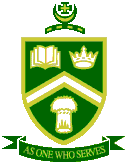
Polymorphism
Contents of this section:
- Pointer to derived objects
- Virtual functions and polymorphism
1. Pointer to derived objects
Code Listing:
// File: ~ftp/pub/class/cplusplus/Poly/PtrDerived.cpp
// Purpose: Using base pointers on derived class objects.
#include <iostream>
#include <cstring>
using namespace std;
class B_class {
char author[80];
public:
void put_author(char *s) { strcpy(author, s); }
void show_author() { cout << author << "\n"; }
} ;
class D_class : public B_class {
char title[80];
public:
void put_title(char *num) {
strcpy(title, num);
}
void show_title() {
cout << "Title: ";
cout << title << "\n";
}
};
int main()
{
B_class *p;
B_class B_ob;
D_class *dp;
D_class D_ob;
p = &B_ob; // address of base
// Access B_class via pointer.
p->put_author("Tom Clancy");
// Access D_class via base pointer.
p = &D_ob;
p->put_author("William Shakespeare");
// Show that each author went into proper object.
B_ob.show_author();
D_ob.show_author();
cout << "\n";
/* Since put_title() and show_title() are not part
of the base class, they are not accessible via
the base pointer p and must be accessed either
directly, or, as shown here, through a pointer to the
derived type.
*/
dp = &D_ob;
dp->put_title("The Tempest");
p->show_author(); // either p or dp can be used here.
dp->show_title( );
return 0;
}
Running session:
@9:35am merc-hu[76]% CC -LANG:std PtrDerived.cpp -o PtrDerived
@9:35am merc-hu[77]% PtrDerived
Tom Clancy
William Shakespeare
William Shakespeare
Title: The Tempest
@9:35am merc-hu[78]%
2. Virtual functions and polymorphism
Code listing:
// File: ~ftp/pub/class/cplusplus/Poly/VirtualPoly.cpp
// Purpose: Vitual function and polymorphism
#include <iostream>
using namespace std;
class figure {
protected:
double x, y;
public:
void set_dim(double i, double j=0) {
x = i;
y = j;
}
virtual void show_area() {
cout << "No area computation defined ";
cout << "for this class.\n";
}
} ;
class triangle : public figure {
public:
void show_area() {
cout << "Triangle with height ";
cout << x << " and base " << y;
cout << " has an area of ";
cout << x * 0.5 * y << ".\n";
}
};
class square : public figure {
public:
void show_area() {
cout << "Square with dimensions ";
cout << x << "x" << y;
cout << " has an area of ";
cout << x * y << ".\n";
}
};
class circle : public figure {
public:
void show_area() {
cout << "Circle with radius ";
cout << x;
cout << " has an area of ";
cout << 3.14 * x * x << ".\n";
}
} ;
int main()
{
figure *p; // create a pointer to base type
triangle t; // create objects of derived types
square s;
circle c;
p = &t;
p->set_dim(10.0, 5.0);
p->show_area();
p = &s;
p->set_dim(10.0, 5.0);
p->show_area();
p = &c;
p->set_dim(9.0);
p->show_area();
return 0;
}
Running session:
@9:41am merc-hu[82]% CC -LANG:std VirtualPoly.cpp -o VirtualPoly
@9:41am merc-hu[83]% VirtualPoly
Triangle with height 10 and base 5 has an area of 25.
Square with dimensions 10x5 has an area of 50.
Circle with radius 9 has an area of 254.34.
@9:41am merc-hu[84]%
Last modified: Friday, 21-Aug-2020 15:28:14 CST
 Copyright 2000 Department of Computer Science, University of Regina.
Copyright 2000 Department of Computer Science, University of Regina.

